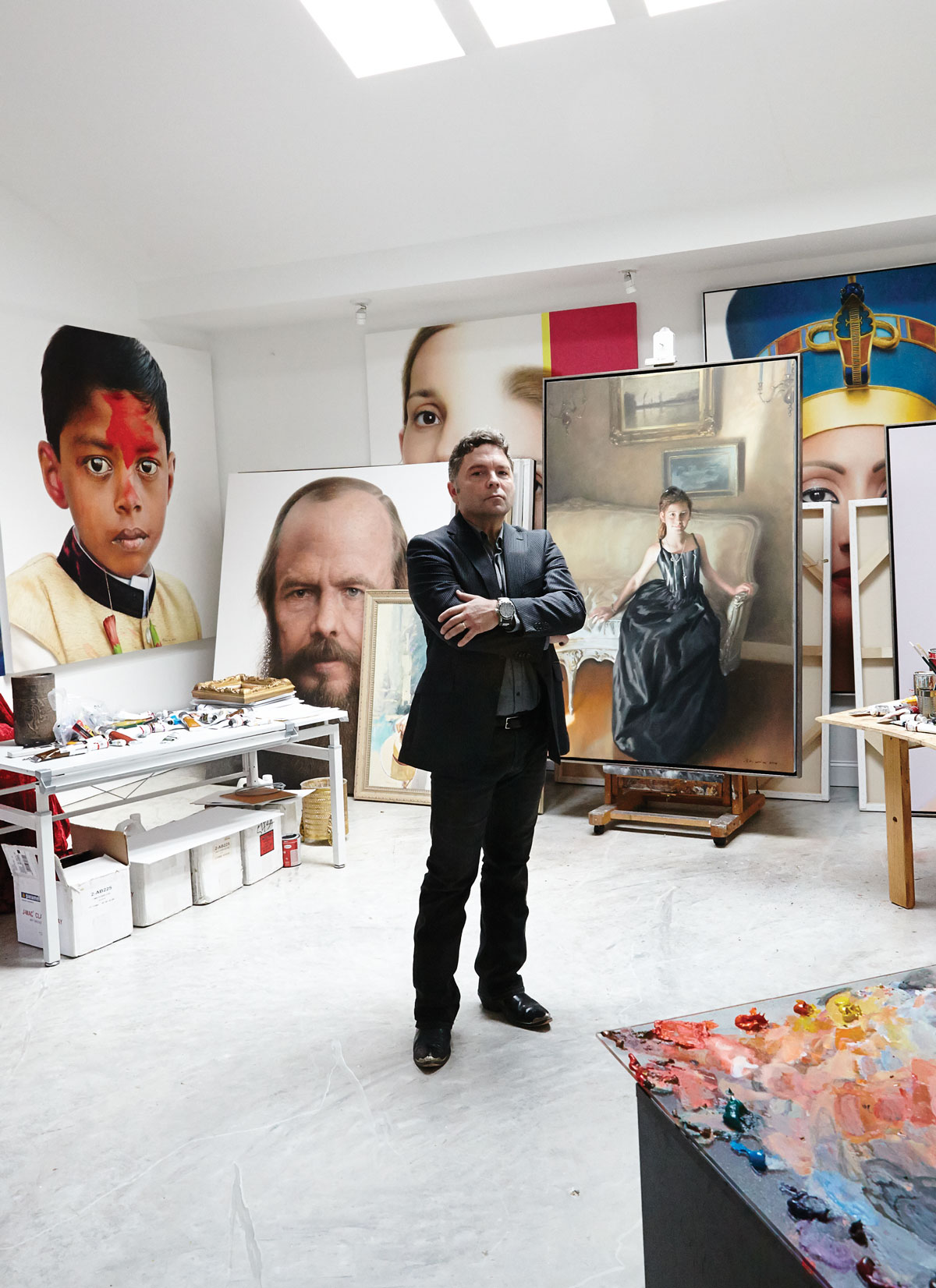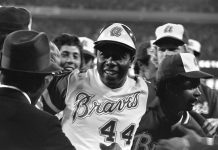
Photograph by Neda Abghari
Ross Rossin had been an internationally successful portrait artist for more than 25 years when he began to see his subjects in a new way.
Rossin possessed masterly technique with oils, and his likenesses were flawless, garnering him commissions in his native Bulgaria and around the world. But when the Atlanta-based painter and sculptor was hired by the Theodore Roosevelt Association in 2007 to paint its namesake, Rossin realized his challenge. Although there were plenty of photos of the 26th president to work from, Rossin had to contend with John Singer Sargent—or, more specifically, the official White House portrait Sargent painted in 1903 that depicts an imperious Roosevelt in a commanding stance. How does one compete with an iconic work by the greatest portrait artist America has produced?
Rossin, who describes art more in terms of philosophy than aesthetics, had an epiphany: Instead of portraying his subject as a personage from the early 20th century, he’d bring Roosevelt into the present day. Working on a canvas five feet across, Rossin filled the expanse with Teddy’s face, his compassionate gaze directed forward at the viewer, on a white field with no background to distract from his hyperrealistic features.
“This style of painting matches how I feel,” Rossin says. “I want to get up close and personal with my subjects, to capture their humanity and show the beauty of the human soul. Whatever I do, I’m looking for perfection.”

Hank Aaron by Ross. R. Rossin, 2010. Oil on canvas, National Portrait Gallery, Smithsonian Institution; Gift of Delta Airlines Inc.; (C) 2011, Ross R. Rossin
Whether or not he’s achieved perfection, Rossin has undoubtedly reached the top tier of American portraiture, commanding prices that can approach six figures. His portrait of a smiling Maya Angelou was selected by the late poet’s family to be featured on a U.S. Postal Service stamp. His paintings of Jimmy Carter and George Bush, both H.W. and W., reside in their respective presidential libraries. Four of his portraits—of former Atlanta mayor and ambassador Andrew Young, actor Morgan Freeman, Atlanta Braves slugger Hank Aaron, and Angelou—have hung in the Smithsonian’s National Portrait Gallery. He’s been hired to paint U.S. senators, governors, college presidents, CEOs, and Nobel Prize winners like Bishop Desmond Tutu. In May the Braves commissioned a sculpture of home run king Aaron to be displayed at the gates of SunTrust Park.
And yet Rossin is largely unknown in Atlanta’s insular arts community—largely by his own choice. He doesn’t exhibit in galleries or offer his work for sale online. The handful of paintings he does for his own enjoyment mostly reside in his studio in northwest Atlanta or are loaned out or donated to museums and other institutions. And instead of hanging out with other artists, he spends much of his social time at the Rotary Club of Atlanta.
But local gallery owner Spalding Nix, who deals in contemporary works alongside modern and old master paintings, says Rossin occupies a rarefied niche in the art world. “His is a type of photorealism where he doesn’t stop until he’s captured the spirit of the sitter,” Nix says. “Most artists would kill for Rossin’s ability to bring his subjects alive.”
All of which makes one wonder: For an artist whose commissions come from across the country and, indeed, around the globe, how did Rossin land in Atlanta?

Born Rossen Raykov in 1964 to a working-class family in Ruse, a city of 150,000 on the northern border of Bulgaria, he was recognized as an artistic prodigy at the age of six and began, at nine, what he calls “strenuous training” under a series of instructors before being accepted at the country’s top art academies. He received his first commission at 16 and in 1988, while still in college, sold a number of paintings to Roy Miles, the late gallery owner in London.
In 1990 a major Japanese art dealer chose Rossin among hundreds of other portrait artists to travel to that country to undertake high-end commissions. The dealer had come to Bulgaria, Rossin says, because it was one of the few places where artists still are taught the kind of classical figurative techniques that lend themselves to portrait work.
Visiting New York for the first time in 1996, Rossin says he fell in love with America. “The energy and opportunity that you find here is what drives me,” he says. In 2001 Rossin was splitting his time between Europe, Japan, and the U.S. when he met Karen Hudson, an agent who’d been representing another portrait artist who had died suddenly. She had a number of commissions already lined up and was searching for someone to complete the work.
Visiting Hudson in Atlanta with his wife, Ava, Rossin says they “felt at home pretty much instantly.” The couple moved here soon after and he became a U.S. citizen in 2010, legally changing his name. Hudson, who represents Rossin exclusively, estimates that they’ve done more than 550 commissions over the past 15 years. Along the way, he’s befriended some of Atlanta’s top civic and business leaders. After meeting Andrew Young at an event eight years ago, he offered to do the portrait that later found its way into the Smithsonian. Young has become something of a father figure for him, Rossin says.

Maya Angelou by Ross R. Rossin, 2013, National Portrait Gallery, Smithsonian Institution; gift of the Andrew J. Young Foundation; (C) Ross R. Rossin
As Rossin’s reputation and client list have grown, so have his prices. The fee for a standard portrait for a first-time client starts at $23,000. For a large-scale hyperrealistic portrait, the price jumps to a heady $60,000. “That’s a lot of money,” Hudson says, “but it’s a museum-quality piece that will last generations. We’re not really in the art business; we’re in the business of honoring people.”
If Rossin has one complaint about his career, it’s that people sometimes say his paintings look like photographs—an observation that necessarily fades as one gets closer to the canvas and sees the fine brushstrokes and expert layering of oil paint.
In any case, he has a ready response to such comments: “My paintings don’t look like photographs. Photographs look like my paintings.”














